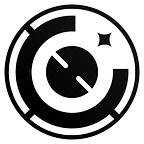How GUI design lowers strain and fatigue
Even seemingly tranquil jobs come with mental and physical strain. Cognitive resources dwindle throughout the day, productivity suffers, and the risk of errors goes up.
There’s a catch: the ergonomic design of the device interface can either heighten or dull the fatigue.
Factors that cause fatigue in device usage
A Swiss petrol station chain asked us to improve the GUI used by their cashiers. User research revealed factors that cause physical strain, such as:
- rapid and repetitive hand gestures at an unnatural angle of the wrist;
- resistive touchscreens that have to be pressed hard cause discomfort;
- screen glare due to ambient lighting is tiring to the eye.
But we also discovered factors that cause fatigue:
- cashiers have to divide their attention between the screen, the customer, and the groceries — a major pain point;
- for bakery items, cashiers can only rely on memory, which is exhausting;
- processes are inconsistent, so cashiers have to concentrate on the GUI.
Design solutions to reduce strain and fatigue
We integrated knowledge of mental models, stressors, and knock-on effects to conceive solutions for each problem in the POS interface.
To reduce physical strain, we strategically placed key buttons to make hand movements more comfortable. After improving the colour scheme, the interface became more soothing in all light settings.
We also reduce the mental effort required. For example, we changed how bakery items are organized so users don’t have to memorize them. As cashiers don’t have to focus on the GUI, they can interact more with customers.
Quantitative testing of GUI designs
Challenging assumptions is what differentiates evidence-based design from speculation, so we establish relevant parameters and perform verifications.
For the POS interface, we wanted to check whether users would understand the interface, so we conducted remote testing.
Then we built a prototype and took it to gas stations, where we gave users a set of tasks to solve as we observed them. For each task, we measured parameters, such as task duration or the angle of their wrists to the screen.
Integration of design into a coherent concept
Coherence is the backbone of great UX. It enhances user productivity, reduces frustration, and supports the learning process.
Once we have solutions for each individual issue, we check to see whether they can function as a cohesive whole or if there are any breaks in patterns and contradictions. We compare interaction patterns and components in use.
Ergonomic interface = market-leading product
The added value of a professional device is measured in the user’s performance throughout the workday — and under pressure. Less fatigue means fewer errors and fewer support requests — the benefits ripple across the organization.
Creative Navy is the leading GUI design boutique in Europe. With offices in the UK, Germany, and Switzerland, they have over a decade of design experience.
